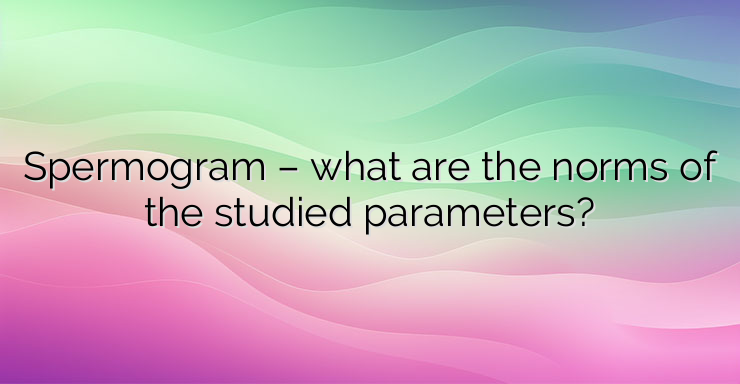Sperm analysis, also called spermogram, is a test that provides information on both a man’s fertility and the state of the hypothalamic-pituitary-testicular axis. The test is usually one of the first investigations to be carried out in families with evidence of infertility. In more than 1/3 of couples with infertility, deviations in the spermogram are found. The test must be carried out according to the guidelines of the World Health Organization (WHO), the latest edition of which is from 2010. The indicators that are evaluated during a sperm analysis are: Sperm concentration; Total number of sperm in the whole ejaculate; General sperm motility; Forward-only sperm count; Sperm vitality; Sperm morphology; Volume of ejaculate (sperm;) Color of ejaculate; Semen fructose level; ejaculate pH; Ejaculate liquefaction time; Other indicators – levels of leukocytes, zinc, neutral-alpha-glycosidase. The “sperm concentration” indicator shows the number of sperm in a unit volume of semen. According to the WHO criteria, more than 15 million per ml is the normal sperm concentration. Fertilization was observed to increase with increasing sperm concentration. However, it was also found that at a value above 40 million/ml there are no additional benefits, i.e. conception is not favored at concentrations higher than this. The total number of sperm in the entire ejaculate is calculated by multiplying the sperm concentration by the volume of the semen. Therefore, accurate determination of sperm volume is very important. This indicator gives a more accurate estimate of fertility than sperm concentration and as a normal lower limit indicated in the criteria is – 39 million/ml. From a biological point of view, the most important indicator is “total number of forward moving spermatozoa”, because they are the ones that will reach the egg cell. According to the “motility” indicator, spermatozoa are divided into four groups: Sperm with progressive motility – i.e. move quickly forward in a straight line; Sperm with non-linear motility – they also move forward, but not always in a straight line; Sperm with non-progressive motility – do not move forward, most often describe circles; Immotile spermatozoa. NEWS_MORE_BOX According to WHO criteria, the normal amount of sperm from the first two groups should be over 40%, and their motility should be assessed within the first 60 minutes after ejaculation. Sperm vitality (ie live sperm) is judged by the integrity of their membrane. Their number must be at least 60%. A normal sperm has a smooth and oval head with an intact midsection and tail. At the top of the head is an acrosome, which should be well demarcated and cover 40 to 70% of the head. Any deviation from normal sperm morphology is pathological.Normally, the number of spermatozoa with correct morphology should be at least 4%. At ejaculation, semen is a concentrated suspension of spermatozoa mixed with seminal plasma, which is formed by the accessory sex organs, mainly the prostate and seminal vesicles and to a lesser extent the bulbourethral glands and epididymis. The normal volume of ejaculate is from 1.5 ml to 5 ml. Its normal color is whitish-grey. Liquefaction time, pH and other indicators: At room temperature, the sample is usually completely liquefied in 15 min, and in rare cases for more than 1 hour; Normal sperm pH ranges between 7.2 and 7.8; Fructose is a source of energy for sperm and its normal amount should be ≥ 13 µmol/ejaculate; Leukocytes – normally should be up to 1 million per ml; Zinc – normally should be ≥ 2.4 µmol/ejaculate; Neutral -alpha-glycosidase – normally should be ≥ 20 mU/ejaculate.


Leave a Reply